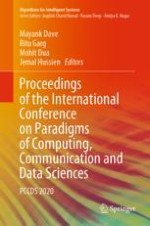2021 | OriginalPaper | Buchkapitel
5. A Study of Aging-Related Bugs Prediction in Software System
verfasst von : Satyendra Singh Chouhan, Santosh Singh Rathore, Ritesh Choudhary
Erschienen in: Proceedings of the International Conference on Paradigms of Computing, Communication and Data Sciences
Verlag: Springer Singapore
Aktivieren Sie unsere intelligente Suche, um passende Fachinhalte oder Patente zu finden.
Wählen Sie Textabschnitte aus um mit Künstlicher Intelligenz passenden Patente zu finden. powered by
Markieren Sie Textabschnitte, um KI-gestützt weitere passende Inhalte zu finden. powered by
